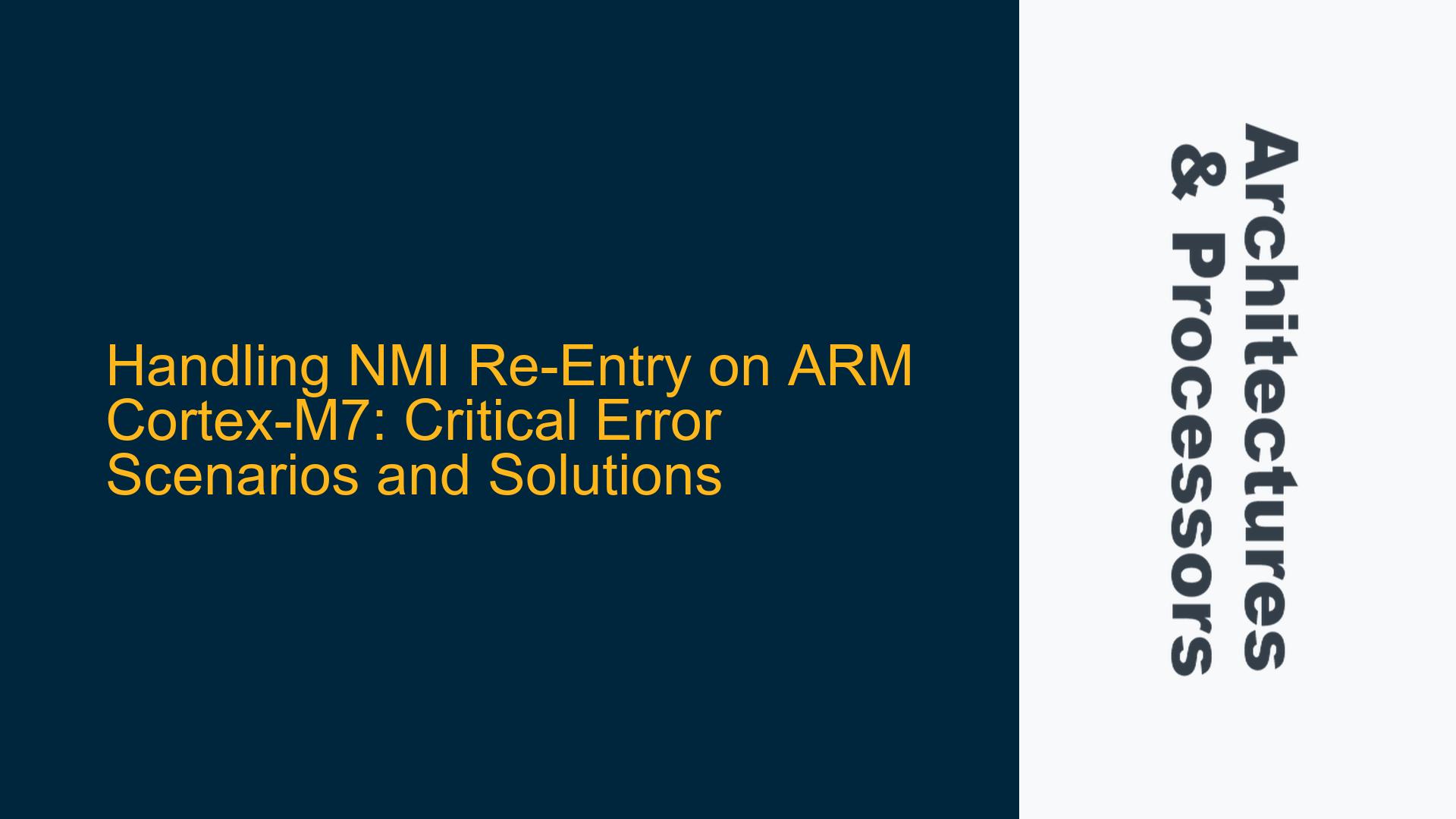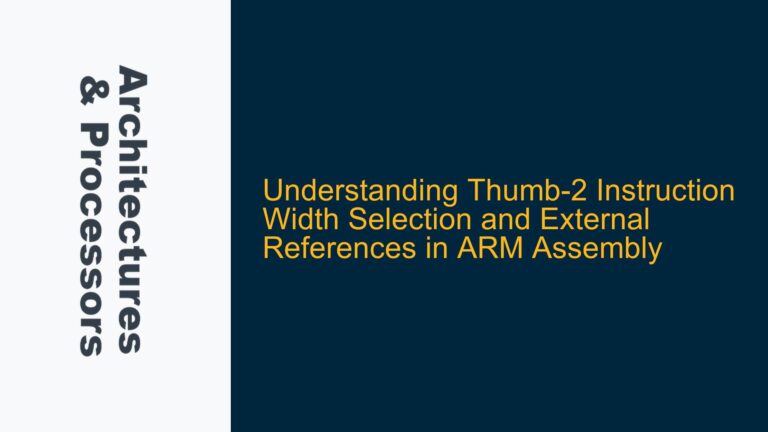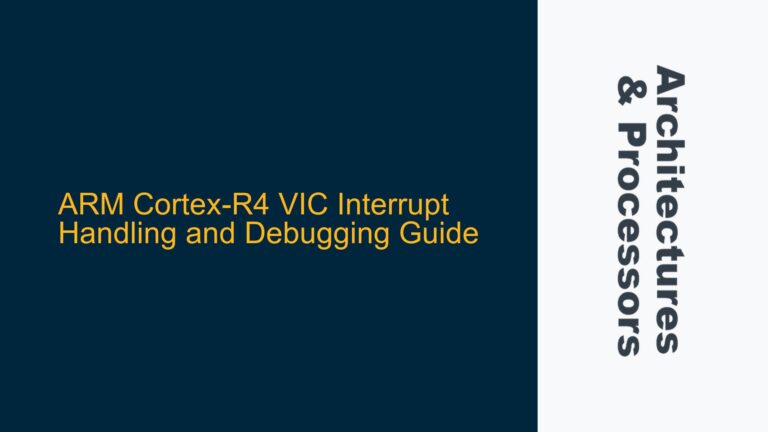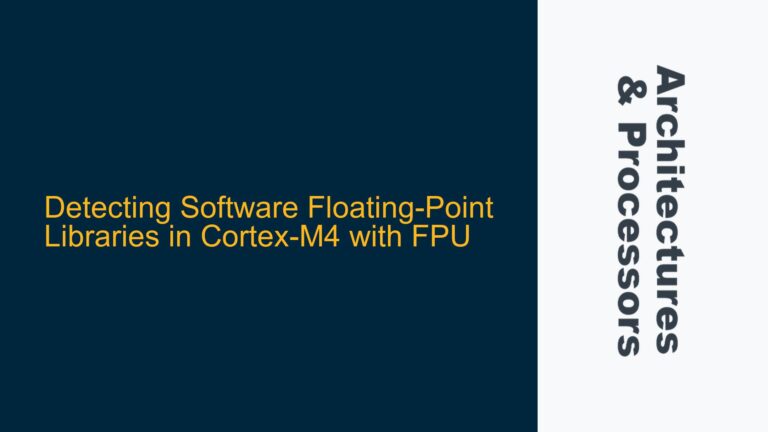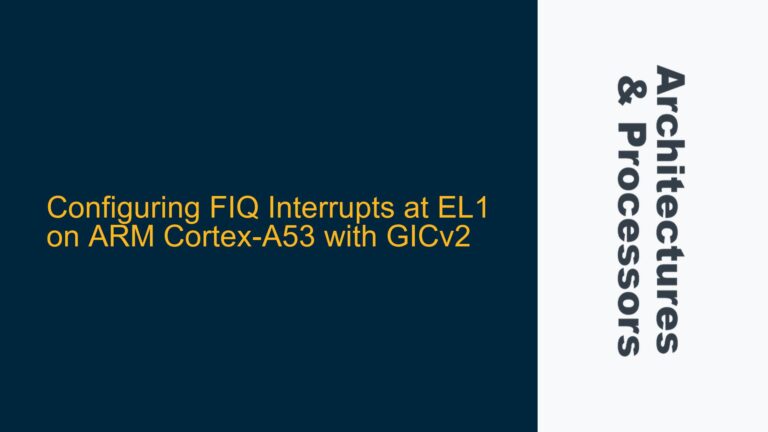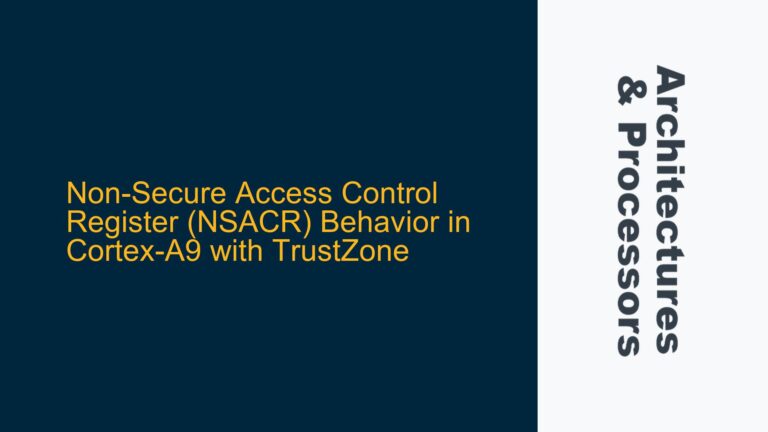NMI Re-Entry Behavior in ARM Cortex-M7 During Critical Error Handling
The Non-Maskable Interrupt (NMI) in ARM Cortex-M7 processors is designed to handle critical system errors that require immediate attention. Unlike regular interrupts, NMIs cannot be masked or disabled, ensuring that the processor responds to these events regardless of the current execution context. However, a critical question arises when multiple NMIs are triggered in rapid succession or while the processor is already handling an NMI. Specifically, what happens when an NMI is triggered while the core is still processing an existing NMI? This scenario is particularly relevant in systems where multiple critical errors can occur in a short time frame, such as in safety-critical applications or systems with cascading failures.
The ARM Cortex-M7 architecture handles NMIs with a specific priority level higher than any other interrupt, including configurable system exceptions. When an NMI is triggered, the processor saves the current execution context (including the Program Counter, Processor Status Register, and other critical registers) onto the stack and jumps to the NMI handler. However, if another NMI is triggered while the processor is still executing the NMI handler, the architecture does not immediately preempt the current NMI handler. Instead, the new NMI is held in a pending state until the current NMI handler completes execution and attempts to return.
This behavior has significant implications for system design and error handling. If multiple NMIs are triggered in quick succession, the processor will not immediately service the new NMI. Instead, it will continue executing the current NMI handler and only recognize the pending NMI when the handler attempts to return. This means that the system may not be aware of the exact number of NMIs that occurred during the handling of the initial NMI, only that at least one additional NMI was triggered. This can lead to challenges in diagnosing and recovering from multiple critical errors, as the system may not have sufficient context to determine the sequence or severity of the errors.
Pending NMI State and Stack Management During NMI Re-Entry
The ARM Cortex-M7 architecture manages NMIs using a combination of hardware and software mechanisms. When an NMI is triggered, the processor saves the current execution context onto the stack and jumps to the NMI handler. The stack management is critical in this process, as it ensures that the processor can resume normal execution after handling the NMI. However, if another NMI is triggered while the processor is still executing the NMI handler, the new NMI is held in a pending state. The processor does not immediately service the new NMI, nor does it save additional context onto the stack. Instead, it continues executing the current NMI handler.
When the current NMI handler completes execution and attempts to return, the processor checks for pending NMIs. If a pending NMI is detected, the processor immediately re-enters the NMI handler without popping the previously saved context from the stack. This means that the stack remains in the same state as it was at the end of the initial NMI handler, and the processor begins executing the NMI handler again. This behavior can lead to stack overflow if multiple NMIs are triggered in rapid succession, as the stack is not cleared between NMI handler executions.
The pending NMI state is managed by the NMI pending bit in the Interrupt Control and State Register (ICSR). This bit is set when an NMI is triggered and remains set until the NMI handler completes execution and the processor checks for pending NMIs. If the NMI pending bit is set when the processor attempts to return from the NMI handler, the processor immediately re-enters the NMI handler without clearing the pending bit. This ensures that the processor does not miss any NMIs, but it also means that the system must be designed to handle the possibility of multiple NMIs being triggered in quick succession.
Implementing NMI Handler Robustness and Stack Overflow Prevention
To address the challenges associated with NMI re-entry and stack management in ARM Cortex-M7 processors, system designers must implement robust NMI handlers and stack overflow prevention mechanisms. The NMI handler should be designed to handle multiple NMIs in quick succession, even if the exact number of NMIs is not known. This can be achieved by implementing a state machine within the NMI handler that tracks the progress of error handling and ensures that critical tasks are completed before returning from the handler.
One approach to preventing stack overflow is to use a separate stack for NMI handling. The ARM Cortex-M7 architecture supports the use of a dedicated stack pointer for exceptions, including NMIs. By configuring the processor to use a separate stack for NMIs, system designers can ensure that the main stack is not corrupted by multiple NMI re-entries. This approach requires careful management of the NMI stack, as it must be large enough to handle the worst-case scenario of multiple NMIs being triggered in quick succession.
Another approach is to implement a software-based stack overflow detection mechanism. This can be achieved by placing a guard value at the end of the stack and checking this value periodically within the NMI handler. If the guard value is modified, it indicates that the stack has overflowed, and the system can take corrective action, such as resetting the processor or logging the error for later analysis.
In addition to stack management, the NMI handler should be designed to minimize the time spent in the handler. This can be achieved by deferring non-critical tasks to lower-priority interrupts or background tasks. By reducing the time spent in the NMI handler, the system can minimize the likelihood of multiple NMIs being triggered in quick succession and reduce the risk of stack overflow.
Finally, system designers should consider the use of hardware-based error detection and correction mechanisms, such as Error Correction Code (ECC) memory or hardware watchdogs. These mechanisms can help detect and correct errors before they trigger an NMI, reducing the likelihood of multiple NMIs being triggered in quick succession. Additionally, hardware watchdogs can be used to reset the processor if the NMI handler becomes stuck in an infinite loop or fails to return in a timely manner.
By implementing these strategies, system designers can ensure that their ARM Cortex-M7-based systems are robust and reliable, even in the presence of multiple critical errors. The key is to carefully manage the NMI handler and stack, minimize the time spent in the handler, and use hardware-based mechanisms to detect and correct errors before they trigger an NMI. With these measures in place, the system can handle multiple NMIs in quick succession without risking stack overflow or other critical failures.
